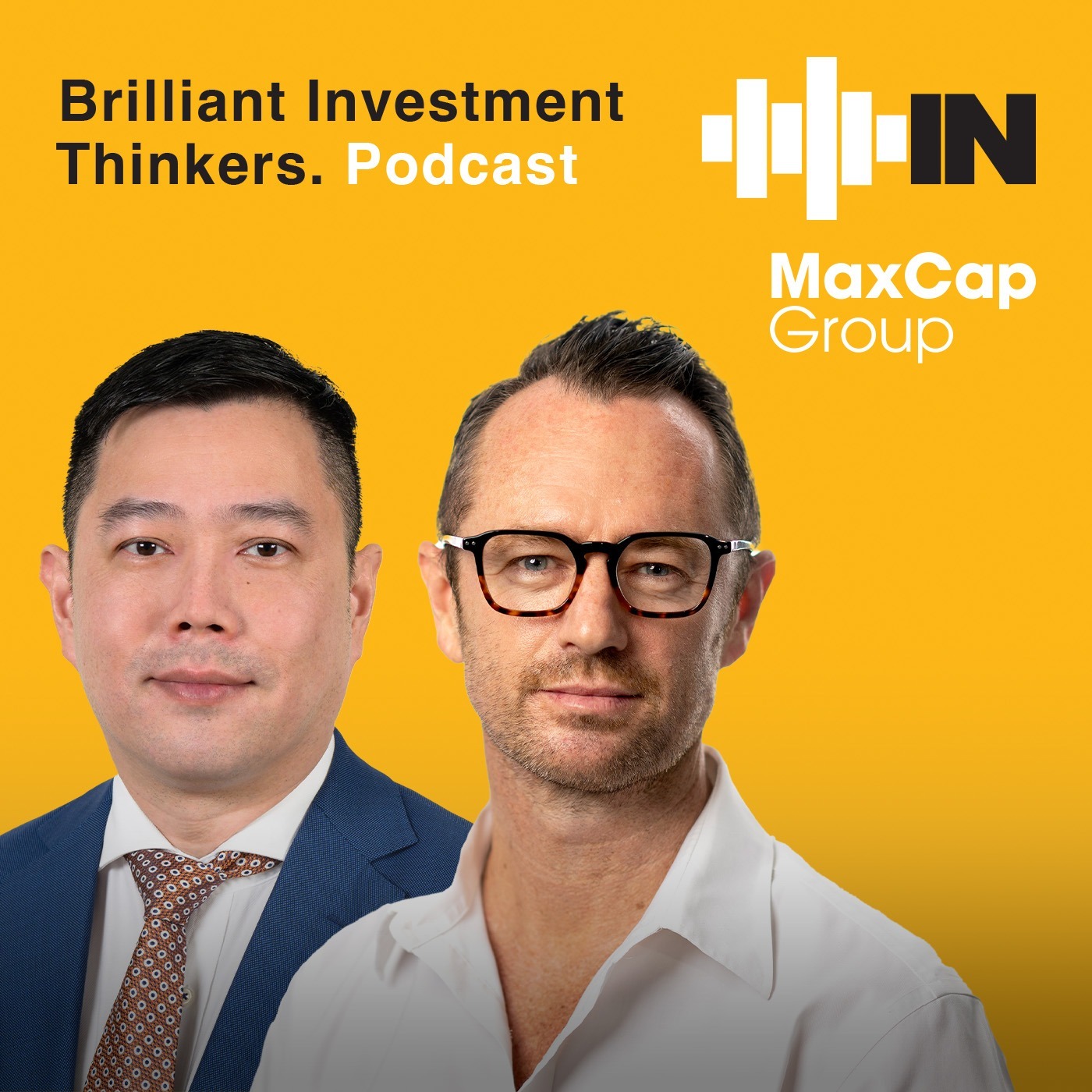As US small-caps tumble, long-term opportunities emerge
It’s an unofficial equation of the stock market: uncertainty + volatility = a down quarter. But for small-cap investors, a potentially interesting market has emerged.
The first quarter of 2025 was a challenging one for US equities. Tariff talk (as well as a volatility-inducing “now you see it, now you don’t” approach to implementation), stubborn inflation, declining consumer confidence, and a consequent revival of recession worries conspired to keep many stocks underwater through February and most of March. Markets hate few things more than uncertainty, and the first quarter seemed to offer a lot more than the usual amount.
The small-cap Russell 2000 Index fell 9.5 per cent, versus a loss of 4.5 per cent for the large-cap Russell 1000 Index. Yet the large-caps’ outperformance was not concentrated among the small cohort of mega-cap stocks that have dominated performance over the last several years: the Russell Top 50 Index declined 7.6 per cent in 1Q25, while the tech-heavy Nasdaq Composite was down 10.3 per cent.
With the Russell Microcap Index losing 14.4 per cent for the first quarter, the year’s first three months offered little in the form of a capitalisation-driven performance pattern. If anything, the period saw a flight away from the Magnificent 7, the tech-driven mega-cap group consisting of Alphabet, Amazon, Apple, Meta, Microsoft, Nvidia, and Tesla, all of which endured losses in 1Q25. The recent de-coupling of the Magnificent 7 from the bulk of large-cap results is a trend we’ll be watching closely as a broadening market has historically meant good things for long-term small-cap performance on both an absolute and relative basis.
Foreign affairs
In stark contrast to their stateside peers, non-US stocks enjoyed a welcome start to 2025. Both the MSCI ACWI ex-USA Small Cap and MSCI ACWI ex-USA Large-Cap Indexes began to turn the page from 2024’s negative fourth quarter to start this year in the black. The MSCI ACWI ex-USA Small Cap gained 0.6 per cent in the first quarter, while its large-cap counterpart was up 5.5 per cent, in each case shaking off the combination of political unrest in Germany, France, and Canada, as well as China’s ongoing economic slump, that contributed to 2024 ending on a down note.
For the one- and three-year periods ended 31 March 2025, non-US large-caps had the relative advantage, while the MSCI ACWI ex-USA Small Cap led for the five- and ten-year periods ended 31 March 2025.
Small-cap style recap
As might be expected during a downdraft, even a so far short-lived one, the Russell 2000 Value Index held its value better than the Russell 2000 Growth Index, down 7.7 per cent versus down 11.1 per cent in 1Q25.
Over the last few years, we have noted how the small-cap style indexes had been alternating performance leadership in an odd kind of symmetry – an observation that held for recent longer-term periods. The Russell 2000 Value beat its small-cap growth sibling for the one- and five-year periods ended 31 March, while trailing the Russell 2000 Growth for the three-year period. Interestingly, the indexes were essentially even for the 10-year period ended 31 March, when each advanced 6.1 per cent.
Finally, the Russell 2000 Value lost far less from the previous small-cap peak on 8 November 2021 through the end of 1Q25, down 7.6 per cent compared to a loss of 19.7 per cent for the Russell 2000 Growth, a result more in line with the small-cap value index’s long-term pattern of losing less during downturns and/or highly volatile markets. (From the Russell 2000’s most recent peak on 24 November 2024 through 31 March 2025, the small-cap value index also won, though by a narrower margin, down 14.7 per cent versus a drawdown of17.2 per cent.)
The small-cap sector story
Within the Russell 2000, 10 of 11 sectors detracted from performance in 1Q25, with the biggest negative impacts coming from information technology, industrials, health care, and consumer discretionary. Utilities was the only positive contributors – making a modest gain – while consumer staples and real estate detracted the least. Defensive sectors – consumer staples, health care, real estate, and utilities – lost far less than their cyclical counterparts. This contrasted with the fourth quarter of 2024, when 10 of 11 sectors finished the quarter in the black.
The bulk of the small-cap tech sector’s detractions came from the software and the semiconductors and semiconductor equipment industries, which, along with biotechnology, were the third biggest losers among the Russell 2000’s industries. Even with these industries having significant detractions, the small-cap downturn was more evenly distributed among sectors, industries, and, of course, companies.
Corrections happen…it’s how one responds that matters
It’s too early to tell if the first quarter was a short-term downdraft or the onset of a more sustained period of falling share prices. One crucial advantage to having been small-cap specialists for more than 50 years, however, is being accustomed to corrections and bear markets. We have always sought to act on the idea of being greedy when others are fearful and fearful when others are greedy.
Of course, we also understand that psychology makes it difficult to keep investing when prices are falling – but we have seen over the years that panic-selling or staying on the sidelines during downturns can be costly over the long run.
To be sure, we wonder if small-cap investors – particularly active small-cap investors – have a psychological advantage over our large-cap peers: corrections have in the past occurred more frequently in the small-cap space. In fact, we believe that staying invested during downturns is one of the most important ingredients in the long-term success of any active investment approach in the equity universe, regardless of style or market cap.
A sunny outlook despite uncertain weather
We are, admittedly, facing uncertain days. The worrisome signs we listed earlier – tariffs, inflation, and falling consumer confidence – are all legitimate concerns. If we do endure a recession – or even a period of stagflation – we will continue to hunt for attractive stock prices in companies that also have some combination of low debt, robust cash flows, established earnings histories, strong long-term growth prospects, and proven management. We think it’s also important to remember that difficult economic and/or market phases are finite. Those who stand to profit most when a recovery arrives are almost always those investors who stayed the course during stormy weather.
In the event that these concerns prove to be overheated, and the economy continues to grow, we see high potential for a sustained period of small-cap leadership.
Based on our metric of choice to gauge index valuations, which is ‘enterprise value over earnings before interest and taxes (EV/EBIT),’ the Russell 2000 remains far more attractively valued than the Russell 1000.
While promising in terms of an eventual reversion to the mean, the valuation situation becomes even more compelling when consensus earnings growth is factored in. At the end of 2024, the Russell 2000 was estimated to enjoy stronger earnings growth in 2025 than the Russell 1000, based on earnings per share (EPS).
(The EPS Growth Estimates are the pre-calculated mean one-year EPS growth rate estimates by brokerage analysts. Estimates are the average of those provided by analysts working for brokerage firms who provide research coverage on each individual security as reported by FactSet. All non-equity securities, investment companies, companies without brokerage analyst coverage are excluded. Source: FactSet.)
We welcome a market environment that continues to present our investment teams with highly promising long-term opportunities, which become easier to find at attractively cheap prices when markets are struggling or experiencing elevated volatility. As we move further into the year, we remain highly constructive on the potential for small-cap leadership and for our active approaches to building portfolios.
Francis Gannon is co-chief investment officer and managing director at Royce Investment Partners.










